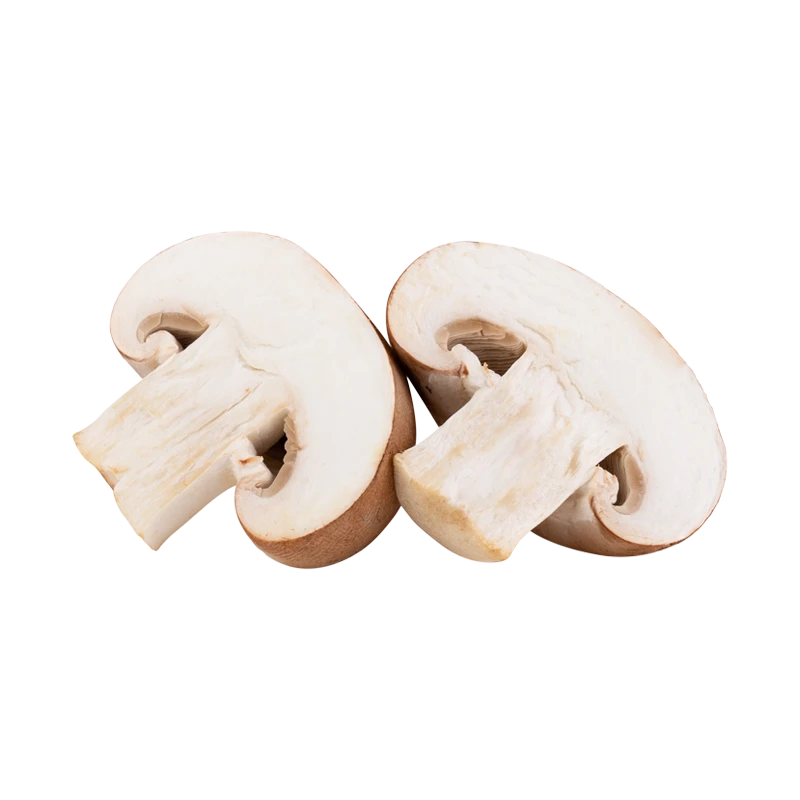Mushrooms — Nutrients, Health Benefits, And Shopping Tips

Written by Listonic Team
Last update on September 4, 2024
Nutrition facts
Nutrition facts
Amount per 100 g
Calories
🔥 22 kcal
| Nutrition per: 100 g | Value | % Daily Value* |
|---|---|---|
| Carbs | 3 g | 1.09% |
| Fiber | 1 g | 3.57% |
| Sugars | 2 g | 4% |
| Glycemic Index | 15 | - |
| Protein | 3 g | 6% |
| Sodium | 5 mg | 0.22% |
| Total Fat | 0 g | - |
*The % of Daily Value (DV) tells you how much a nutrient in a serving of food contributes to a daily diet. 2,000 calories a day is used for general nutrition advice.
22
🍏 Low-Calorie Foods
15
🟢 Low Glycemic Index
Did you know?
Health benefits
- Rich in antioxidants such as selenium and ergothioneine, which help protect the body from free radicals and reduce inflammation.
- High in vitamins and minerals such as Vitamin D, B vitamins, copper, and potassium, which support overall health and well-being.
- Low in calories, making them a nutritious addition to a balanced diet.
- Supports immune function due to their bioactive compounds like beta-glucans.
- May support heart health by helping to lower cholesterol levels and improve blood pressure.
Health risks
- Risk of contamination with harmful bacteria, particularly if mushrooms are not properly washed, stored, or cooked to a safe internal temperature.
- Potential for allergic reactions in some individuals, causing symptoms like itching, swelling, or difficulty breathing, though this is relatively rare.
- Risk of digestive discomfort such as gas or bloating when consumed in large quantities, particularly in raw form or for those sensitive to certain types of mushrooms.
- Potential for toxic varieties if foraging for wild mushrooms, as some can be poisonous and cause serious health issues or death if consumed.
How to choose mushrooms
Mushrooms should have a firm texture and a smooth cap, with a uniform color that ranges from white to deep brown, depending on the variety. The surface should be dry to the touch, not slimy or sticky.
Do not purchase mushrooms that have a pitted or shriveled appearance, as these are signs they are old or have been improperly stored. Good quality mushrooms should have a mild, earthy flavor that enhances dishes without overpowering other ingredients.

How to store mushrooms
Fresh mushrooms should be stored in a paper bag in the refrigerator to maintain their freshness. Avoid using plastic bags as they can trap moisture and cause the mushrooms to become slimy. Properly stored mushrooms can last up to a week.
Exposure to excess moisture and air can lead to quick spoilage of mushrooms. Avoid washing mushrooms before storing as they can absorb water and become mushy. Only wash them just before use to maintain their texture and flavor.
✅ Extra Tip
How long do they last?
Mushrooms can last for 3-7 days in the refrigerator. To keep them fresh, store them in a paper bag or a container with a paper towel to absorb excess moisture. Cooked mushrooms should be consumed within 3-5 days.
What to do with leftovers?
Leftover mushrooms can be used in a variety of savory dishes. Sauté them with garlic and herbs as a side dish, or mix them into a pasta sauce with cream and Parmesan for a rich and flavorful meal. Mushrooms are also great when added to omelets, frittatas, or quiches, where their earthy flavor pairs well with eggs and cheese.
Use mushrooms as a topping for pizzas or flatbreads, or mix them into a stir-fry with vegetables and your choice of protein. If you have a lot of mushrooms, consider making a batch of stuffed mushrooms with breadcrumbs, cheese, and herbs, then baking until golden. Mushrooms can also be added to soups or stews for added depth of flavor, or used as a filling for savory crepes or pastries. For a quick snack, sauté mushrooms with soy sauce and serve over toast or rice.
👨⚕️️ Medical disclaimer
Discover products from other categories
Listonic Team
Fact-checked
Our editorial team checked this article to make sure it was accurate at the time of publishing it.
Get the top-rated shopping list app on your phone!







